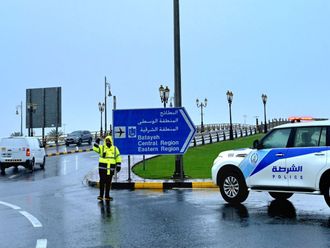Al Ain: Hot southerly winds on Sunday triggered dusty conditions in Al Ain in much of the internal and western areas, reducing visibility especially in the morning time, and raising temperature to record level in some areas.
The mercury on Saturday jumped to 48.1 degree Celsius in the Yasat Island, a UAE island in the Arabian Gulf near Sila in the western region of Abu Dhabi Emirate. The average maximum temperature on this island in May is 46.1c, according to the National Centre of Meteorology and Seismology (NCMS).
The weather is not much different in other cities including Dubai, Abu Dhabi, Al Ain, Ras Al Khaimah, Sharjah, and Umm Al Quwain where heat couples with high level of humidity. This creates unbearable conditions for human body with low comfort index.
The NCMS reported a maximum temperature of 43.3 degrees Celcius in Al Ain, 43.6 degrees Celcius in Hatta, 44.1 degrees Celcius in Madinat Zayed, 44.6 degrees Celcius in Swiehan, 44.7 degrees Celcius at Abu Dhabi airport, 43.8 degrees Celcius at Dubai airport, 45 degrees Celcius in Sharjah and RAK airports, and 43.3 degrees Celcius in Umm Al Quwain .
A forecaster said the country has already suffering from some early heat cyclones in the Empty Quarters (a desert bordering UAE and Saudi Arabia) from where hot southerly winds have been sweeping in.
The conditions, particularly in the daytime, have been giving a tough time to schools children, labourers, field workers, and elderly people. Streets in different cities wear deserted looks at around midday when most people take a refuge in air-conditioned environment at their homes and offices.
"These are difficult weather conditions as everybody knows the season have been heading towards the summer months," said the forecaster. People must take seasonal precautions before stepping out to avoid any risks, he added.
The stifling heat hits the country in the summer months when UAE is overrun by winds coming from the burning hot desert in the South East, carrying baked air over to the interior areas.
According to the NCMS, the weather would remain hot and hazy at times at least over the next couple of days. It could also be partly cloudy over the eastern mountainous areas in the afternoon. Winds are likely to be moderately rough, kicking up dust and sands in some areas especially the internal and western areas. This could lead to reduced horizontal visibility.
The sea is expected to be moderately rough.












